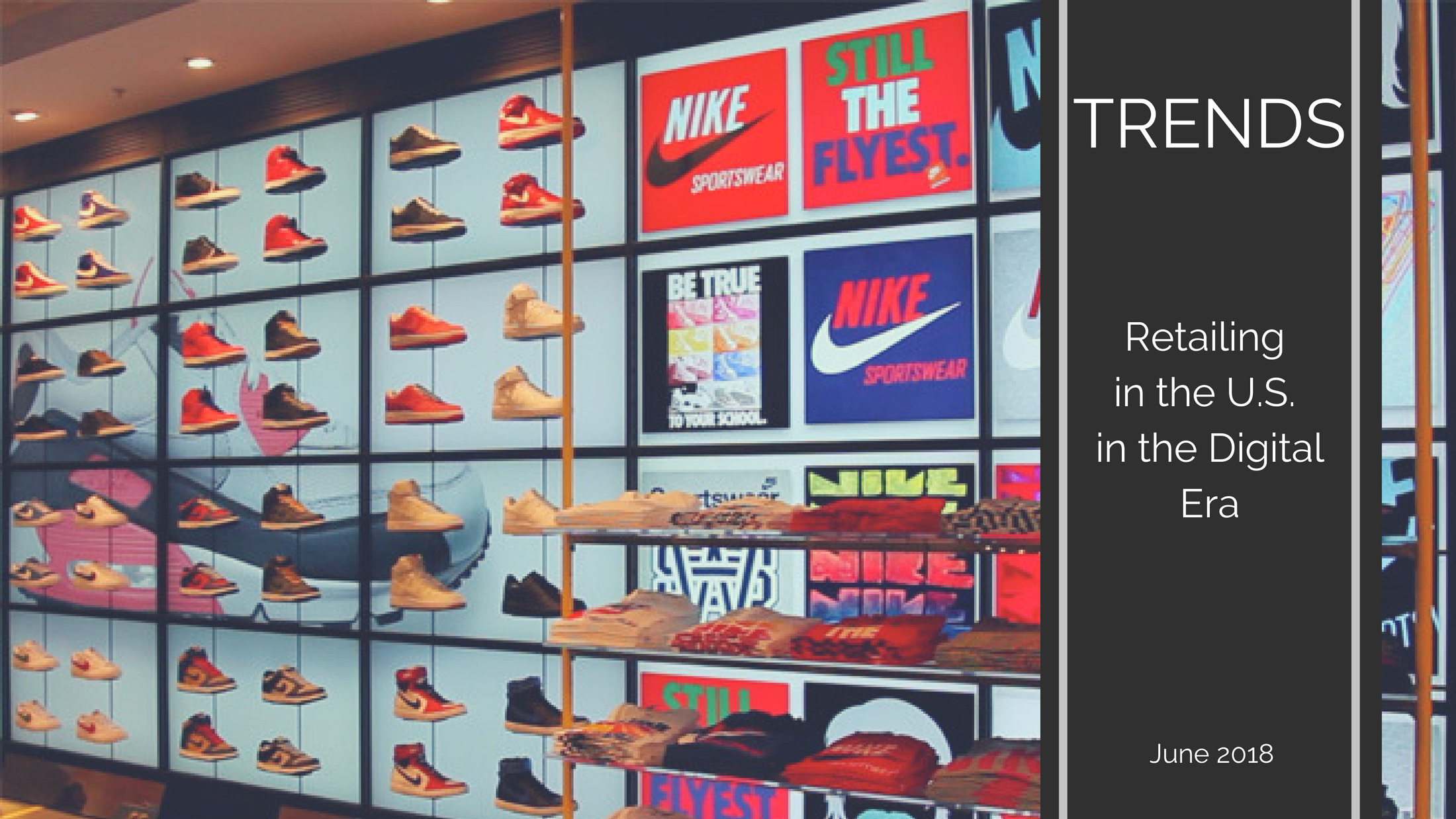
11 Jun Retailing in the U.S. in the Digital Era
The industry is transforming, and brick-and-mortars need to adjust in the digital era. Indeed, in 2018, more than 3,800 stores are expected to close in the U.S., mostly apparel (Gap, Abercrombie, Michael Kors, Guess, J.Crew…) and mall-based stores (Sam’s Club, Sears, Kmart, Macy’s…).
Shoppers are now devoting a smaller share of their wallets to clothing and accessories and instead spending more on big-ticket items like cars and travel, as well as food, technology, and health care. More educated, American consumers are rather ‘savvy shoppers’, looking for the best deals and comparing prices through multiple platforms, from brick-and-mortar stores as well as department stores online shops, boutiques, designer sites and third-party sellers.
However, 91% of retail sales still take place in brick-and-mortar stores: physical retail is not dead.
It is true that Digitally Native Vertical Brands (DNVB’s) succeed in building competitive advantages and differentiators, particularly when it comes to adopt a user- and data- centric strategy. This tech-savvy DNA directly positively impact on their ability to enhance the customer experience, providing them with personalized offer and thus better attract, engage and retain customers online. But one major strength is their customer knowledge that enables them to develop their physical footprint in a full conscience of customers’ expectations. Moreover, their agile culture is a valuable asset which help them to adapt and develop new services or products almost at a glance.
But successful retailers are those who found new growth drivers, not considering bricks as a purely transactional space:
- b8ta envisions physical store as an innovative window display and a means for data collection – offering a Retail as a Service model;
- Nike builds urban temples of customers’ engagement, multiplying add-on services like personal coaching and building a brand community which turn customers into fans;
- Sephora focuses on customer education, modeling physical stores with dedicated area for self-learning – where ‘Customer Experience’ means ‘Customer Success toward an item’.
- Crate & Barrel provides seamless customer experience reconciling data collected both online and offline. Being platform-agnostic, the brand aims to make the customer journey as comfortable and inspirational as the in-store shopping excursion.
- Warby Parker‘s original ecommerce-only, try-at-home, one-for-one business model (where for every pair purchased, a pair is distributed to someone in need) spans from online to real life, planning to open 100 stores by the end of the year, only 7 years after the company’s debut. The brand offers a unique ‘library-like’ retail experience combining retro stylish frames and rapid and efficient on-the-spot eye exams, next-day and direct-to-door services.
- Even Amazon has opened 15 Amazon Book Stores that offer a physical selling space adapted to the consumers’ behaviours data collected online.
Beyond re-inventing the customer experience, it has become a necessity for retailers in the digital era to adapt and turn to new services and business models in order to build differentiation factors, competitive advantages and entry barriers.
At B.D.C., we unveil latest trends and give retailers a fresh eye to define their DNA, roadmap top priorities in the digital era and help them seizing the opportunities and take up the challenges of the retail war.
Written by Sophie Ducornet, Consultant at B.D.C. US

